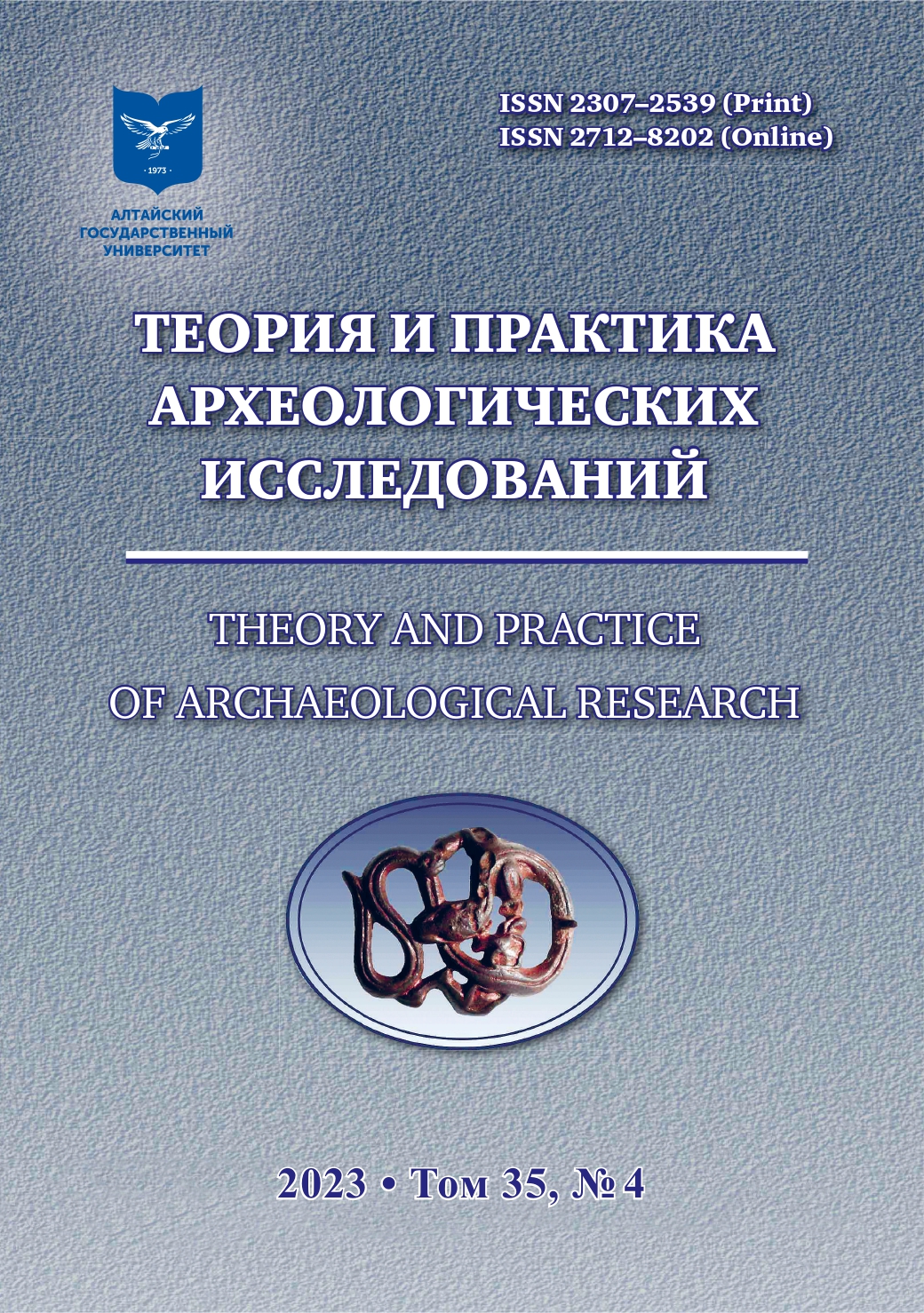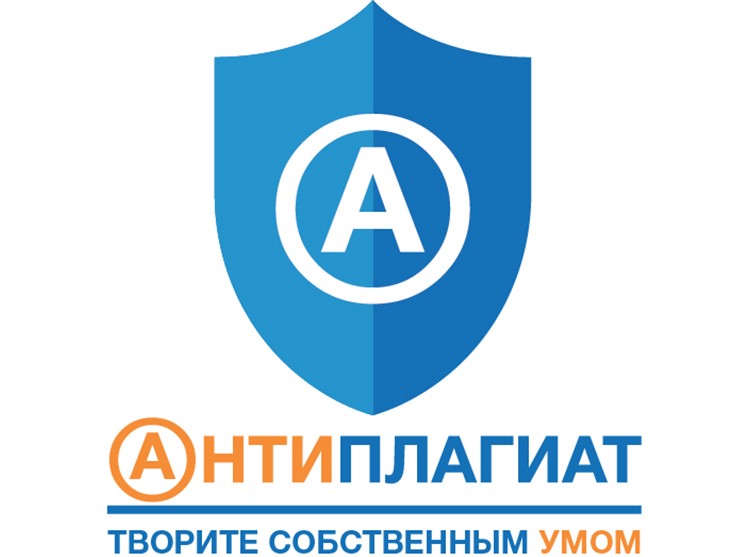CENSERS FROM AFANASYEVO SETTLEMENTS FROM THE ALTAI MOUNTAINS
Abstract
The article introduces into scientifi c circulation the data on Afanasyevo censers from the settlements studied in the Altai Mountains, and presents a comparative analysis with similar products from funeral complexes. The relevance of research is that in publications there is practically no information about vessels of this type from settlements. More than 20 censers were found in three settlements, which doubles the total number of such products from the Altai Mountains. Censers from the settlements, as well as from funeral complexes, belong to two options for decorating a pallet, using different tools and methods. A comparative analysis of this type of vessel from different regions revealed a similarity and difference in the design of pallets of finds from the Altai Mountains, Yenisei and East Kazakhstan. A comparison with the censers of the Okunev, Ancient Yamnaya and Catocomb cultures showed that the similarity lies only in the presence of a bowl and a tray. Afanasyevo incense censers have handles, but there are no partitions in the bowl; the differences can be seen in the design of the trays and the ornament. A comparison of radiocarbon dates showed that the Afanasyevo incense censers from the Altai Mountains are much older than the Okunev, ancient Yamnaya and catacombones. The presence of common features in incense censers from different cultures allows us to speak about a common prototype of such products.
Downloads
Metrics
No metrics found.
References
Vadetskaya E.B. Siberian Censers. In: Neolithic and Bronze Monuments. Moscow : Nauka, 1986. Pp. 50–59. (Brief Communications of the Institute of Archaeology. №185) (In Russ.)
Vadeckaya E.B., Polyakov A.V., Stepanova N.F. A Set of Sites of Afanasievo Culture. Barnaul: Azbuka, 2014. 380 p. (In Russ.)
Derevianko A.P., Molodin V.I. Denisova Cave. Part 1. Novosibirsk : Nauka, 1994. 261 p.(In Russ.)
Kalinina I.V., Ustinova E.A. Technological Classifi cation of Ornaments of Neolithic-Chalcolithic Ceramics of the Ural Region. In: Archaeological Collection of the State Hermitage. Issue 30. Leningrad : Iskusstvo, 1990. Pp. 7–19. (In Russ.)
Kovalev A.A., Rezepkin A.D. Censers from a Dolmen in the Klady Tract and the Problem of the Origin of Censers of the Afanasyevskaya culture // Problems of Studying Okunevskaya Culture. St. Petersburg : B.i., 1995. Рp. 16–20. (In Russ.)
Korobkova G.F., Shaposhnikova O.G. Th e Settlement of Mikhailovka is a Reference Site of the Ancient Yamnaya Culture (ecology, dwellings, tools, life support systems, production structure). St. Petersburg : Evropeijskij dom, 2005. 316 p. (Proceedings of IHMC RAS. Vol. XX) (In Russ.)
Kubarev V.D., Kireev S.M., Cheremisin D.V. Mounds of the Bike Tract. In: Archaeological Research on the Katun. Novosibirsk : Nauka, 1990. Pp. 43–95. (In Russ.)
Panasyuk N.V. Early Catacomb Censers of the Ciscaucasia. Rossijskaya arheologiya = Russian Archaeology. 2010;2:25–38. (In Russ.)
Panasyuk N.V. Censersof the Catacomb Cultures of Ciscaucasia : Abstract Dis. ... Cand. Hist. Sciences. Moscow, 2015. 24 p. (In Russ.)
Pogozheva A.P., Rykun M.P., Stepanova N.F., Tur S.S. Th e Epoch of the Eneolithic and Bronze of the Altai Mountains. Part 1. Barnaul : Azbuka, 2006. 234 p. (In Russ.)
Polyakov A.V. Problems of Chronology and Cultural Genesis of the Sites of the Paleometal era of the Minusinsk Basins: Abstract Dis. ... Dr. Hist. Sciences. St. Petersburg, 2020. 53 p. (In Russ.)
Poliakov A.V., Sviatko S.V., Stepanova N.F. Th e Problem of Radiocarbon Chronology of the Afanasyevo Culture and the New Data. In: Phenomena of Cultures of the Early Bronze Age of the Steppe and Forest-Steppe Zone of Eurasia: Ways of Cultural Interaction in the 5th — 3rd Millennium BC. Orenburg : Izd-vo OGPU, 2019. Pp. 181–187. (In Russ.)
Stepanova N.F. Problems of the Chronology of Afanasyevskaya Culture. In: Afanasyevsky Collection 2. Barnaul : Izd-vo Azbuka, 2012. Pp. 183–195. (In Russ.)
Stepanova N.F. Censers of the Early Bronze Age from the Altai Mountains. In: Modern Solutions to Current Problems of Eurasian Archaeology. Vol. III. Barnaul : Izd-vo Alt. un-ta, 2023. Pp. 129–133. (In Russ.)
Toleubaev A.T., Zhumataev R.S., Shakenov S.A. New Original Sites of the Eneolithic Era in the Zaisan Region of the East Kazakhstan Region). Mir Bol’shogo Altaya = World of Greater Altai. 2017;3(4):611–625. (In Russ.)
Shaposhnikova O.G., Fomenko V.N., Dovzhenko N.D. Yamnaya Cultural-Historical Region (Southern Bug variant). In: Collection of Archaeological Sources. B1-3. Kyiv : Naukova dumka, 1986. 160 p. (In Russ.)
Copyright (c) 2023 Н.Ф. Степанова

This work is licensed under a Creative Commons Attribution 4.0 International License.
Theory and Practice of Archaeological Research is a golden publisher, as we allow self-archiving, but most importantly we are fully transparent about your rights.
Authors may present and discuss their findings ahead of publication: at biological or scientific conferences, on preprint servers, in public databases, and in blogs, wikis, tweets, and other informal communication channels.
Theory and Practice of Archaeological Research allows authors to deposit manuscripts (currently under review or those for intended submission to ABS) in non-commercial, pre-print servers such as ArXiv.
Authors who publish with this journal agree to the following terms:
- Authors retain copyright and grant the journal right of first publication with the work simultaneously licensed under a Creative Commons Attribution License (CC BY 4.0) that allows others to share the work with an acknowledgement of the work's authorship and initial publication in this journal.
- Authors are able to enter into separate, additional contractual arrangements for the non-exclusive distribution of the journal's published version of the work (e.g., post it to an institutional repository or publish it in a book), with an acknowledgement of its initial publication in this journal.
- Authors are permitted and encouraged to post their work online (e.g., in institutional repositories or on their website) prior to and during the submission process, as it can lead to productive exchanges, as well as earlier and greater citation of published work (See The Effect of Open Access).








2.jpg)




